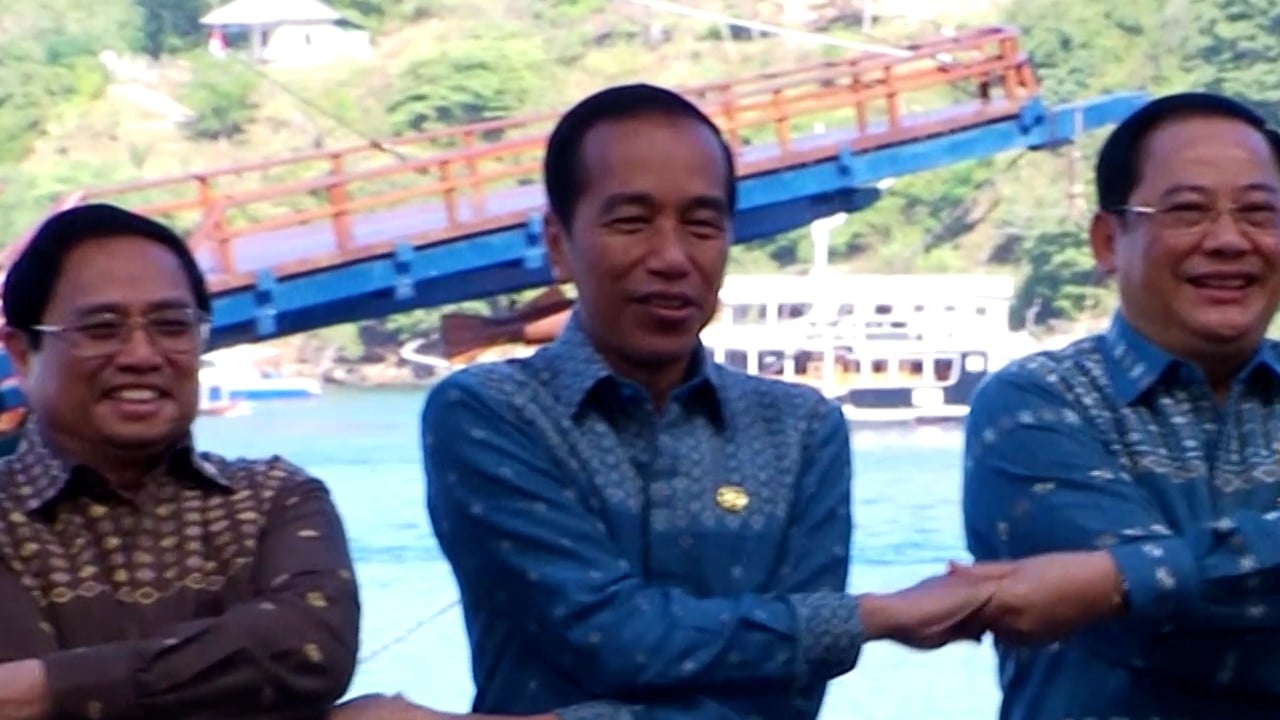
India’s border security interests make Asean’s Myanmar peace plan a ‘second-rank concern’
- Asean dialogue partner India continues to engage with Myanmar, despite the bloc’s frustrations the junta is not cooperating with its peace plan after the 2021 coup
- Analysts say ‘national security’ comes first for India, as it needs Myanmar in the border security fight against insurgency, drugs and trafficking
The two foreign ministers discussed issues relating to their common border, with Jaishankar stating India’s concerns about Myanmar’s humanitarian situation.
Nevertheless, India continues to sell arms to the junta. A United Nations report in May said sales stood at US$51 million since the coup, including of weapons, raw materials and manufacturing equipment for arms manufacturing.

Asean’s main strategy to resolve the crisis is the Five Point Consensus, which the Tatmadaw, or Myanmar’s military, agreed to in April 2021. The points included an immediate end to violence, dialogue among all parties and the appointment of a special envoy.
Akash Sahu, an analyst in Indo-Pacific geopolitics and an independent policy consultant, said India’s sustained engagement with Myanmar was driven by security concerns in its northeastern border regions.
“Myanmar’s cooperation is significant to combat insurgency, and drugs and human trafficking,” Sahu said, adding that the lack of a central agency dealing with these matters other than the military made it necessary for India to deal with the junta.
Pointing out that India endorsed Asean’s leadership in resolving the Myanmar crisis, Sahu said the different views within the regional grouping on the crisis reflected “the sensitivity and complexity of the issue”.
At the end of the day, India isn’t a formal member of Asean, and so it won’t let Asean goals get in the way of its own interests
Michael Kugelman, South Asia director at The Wilson Centre based in Washington in the US, said while India might worry about the destabilising impact of the junta’s actions on border security, it also viewed the Myanmar military as an essential partner for border cooperation and connectivity projects.
“Whether or not Myanmar is ruled by the military, the armed forces will remain an important political and diplomatic actor,” Kugelman said, adding that was why India was willing to engage with it, even if doing so “conveys a message of legitimisation”.
Kugelman said India had a strong desire to strengthen ties with Asean countries, not just to counter China’s influence but also to deepen trade and energy links.
“But at the end of the day, India isn’t a formal member of Asean, and so it won’t let Asean goals get in the way of its own interests,” Kugelman said, which meant maintaining “workable relations” with the junta.
Sharon Seah, senior fellow and coordinator at the Asean Studies Centre at the ISEAS-Yusof Ishak Institute in Singapore, said that under India’s Neighbourhood First Policy – which focuses on improving ties with immediate neighbours – Delhi viewed Myanmar as a neighbour first, and member of Asean second.
“As a close neighbour, India wants to make sure there is no downward spiral in Myanmar that could inadvertently affect its own national security,” Seah said, adding that Myanmar’s obligations to Asean are “of second-rank concern to India”.
By backing Thailand-initiated meetings, she said, it was not clear if India – which has said it supports Asean’s peace plan for Myanmar – was actually supportive of it.
As Asean’s dialogue partner, India could offer to bridge the gap and if it was serious about playing a role, Seah said. It should consult Asean chair Indonesia “or at least encourage Thailand to begin a proper consultation process with all Asean members”.
“As one of Myanmar’s closest neighbours, it is incumbent on India to persuade Myanmar to work with Asean’s Five Point Consensus,” she said.
Swaran Singh, professor at the School of International Studies in Delhi’s Jawaharlal Nehru University, said India’s “cautious cultivation” of the junta over the past decades had led to the “gradual democratisation of Myanmar”, a process which was now “briefly reversed”.
“However, India remains hopeful that such a cautious cultivation of military junta can restart that democratisation process, which remains India’s major objective,” Singh said.
In the 2015 election, the NLD again won an absolute majority. Although Suu Kyi was constitutionally barred from the presidency, she assumed the role of state councillor.
In the 2020 polls, NLD’s absolute majority was met with claims of fraud from the military, leading to widespread investigations, civil unrest, and ultimately the coup.

India arm sales
Sahu said that if India did not sell arms to Myanmar, the junta would have to depend entirely on China and Russia.
“The relationship not only allows certain leverage with the military regime, but also creates space for humanitarian efforts,” he said.
Singh said India had always restricted its military supplies to Myanmar to auxiliary (backup) and non-lethal defence equipment, adding that Delhi’s arm sales to the nation had been slow compared to the rise in its overall arms’ exports in recent years.
“(This) shows India’s caution in engaging the Myanmar military,” Singh said.
Even though India’s exports of arms have risen from US$82 million in 2013 to US$1.9 billion last year, it was one of the world’s largest importers between 2009 and 2013, importing mainly from Russia, the United States and Israel, according to the Stockholm International Peace Research Institute.
While India has pledged to promote its own defence manufacturing and exports of arms, with the target of increasing annual exports to US$5 billion by 2025, Delhi was still the world’s largest importer from 2018 to 2022, accounting for 11 per cent of global imports, said the institute.


